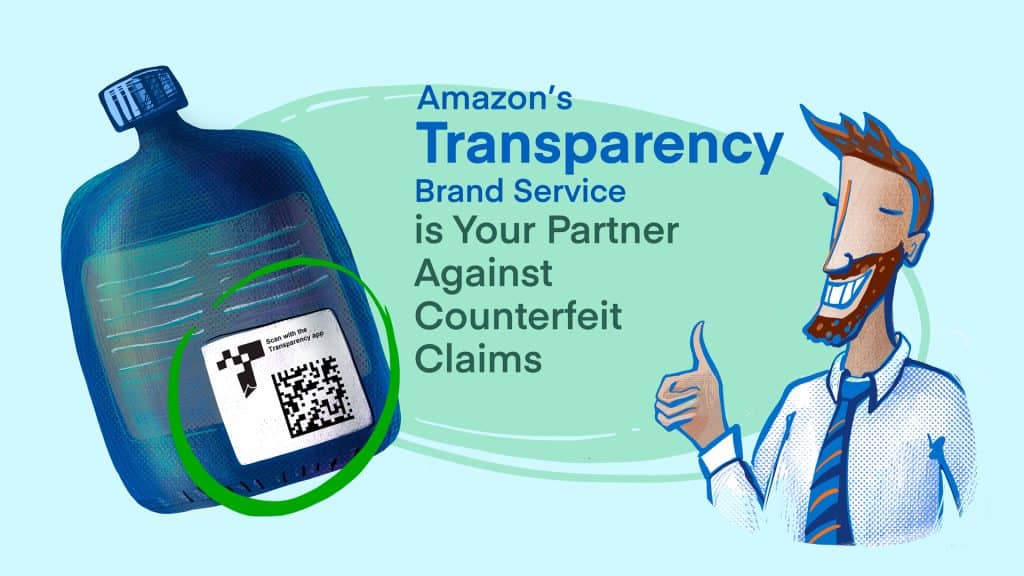
In January 2020, the Department of Homeland Security (DHS) began a serious effort to crack down on counterfeit goods sold on ecommerce platforms. This strong defense of intellectual property (IP) rights was designed to protect brands against those pirating their merchandise.
At the same time, it made it apparent that the federal government was prepared to hold ecommerce marketplaces accountable for allowing counterfeit goods on their platforms. Every marketplace responded in its own way. That said, as with most major developments in ecommerce, all eyes were on Amazon’s response.
Since then, the ecommerce giant has taken several steps to answer the call to police its marketplace against counterfeiters:
- Amazon established a Counterfeit Crimes Unit that works with brands, retailers, and law enforcement to prosecute those who have listed or are attempting to list counterfeit merchandise on the Amazon Marketplace.
- Amazon has increased its policy on price-gouging, especially concerning emergencies like the COVID-19 pandemic.
- Amazon will require third-party sellers in the US to publicly disclose their names and addresses to customers (as of September 1, 2020).
These are welcome changes for legitimate ecommerce retailers and brands, but they do little to empower sellers who want to offer real-time assurances of product authenticity at the point of sale. That’s where Amazon’s product serialization service, Transparency, comes in. Starting in 2019, it may be one of the best weapons against counterfeit branded products.

Transparency Allows Sellers and Buyers to Authenticate Branded Merchandise
While many of the aforementioned counterfeit-reducing steps are reactive, Transparency is an active service that allows customers to verify the authenticity of the products they are shopping for before adding them to their shopping carts.
To participate, sellers purchase and assign a unique Transparency code for every unit they sell. Transparency generates and logs this proprietary alphanumeric code. When a customer orders a product with a Transparency code, the unit is procured, and its code is verified before it is shipped to the customer.
The fact that each piece of inventory has its unique Transparency code (rather than one code per SKU) adds a layer of anti-counterfeiting security that bad actors cannot easily defeat.
This nominal investment of a few pennies per code can serve as proactive, cost-effective insurance against the massive losses associated with trying to outsell IP-infringing competition and pursuing legal action to stop it.
Sellers and brand owners are not the only beneficiaries of the Transparency service. Customers have access to this platform as well. Purchased items can be scanned using either the Amazon app or the dedicated Transparency app (available on iOS and Android), and their authenticity can be verified.
Amazon has explained this scanning functionality, which allows sellers to include pertinent product details such as ingredients, manufacturing origin, and expiration dates. An additional benefit of Transparency is that it is not limited to Amazon sales. While Amazon controls the code-generating algorithm and verification, Transparency-coded products can be sold in any ecommerce or brick-and-mortar retail setting.
This is especially helpful for multi-channel sellers who use a centralized inventory management workflow—there is no need to isolate Transparency-enabled merchandise. That said, it is worth remembering that scanning a product’s Transparency code will always be a road that leads back to Amazon, no matter where the customer encounters said product.
Descartes Sellercloud Users Can Enroll in Transparency Today
Descartes Sellercloud is one of the few Software as a Service (SaaS) platforms that integrates directly with Amazon’s Transparency. Our omnichannel inventory management platform already has systems in place to integrate Transparency codes into the inventory, order picking, and shipping processes you already have.
Once enrolled, select the particular products you need to protect, purchase the necessary Transparency codes, and, from there, the relevant data can be imported into your Descartes Sellercloud catalog database.
Furthermore, since Transparency is not limited to Amazon Marketplace listings, you can use its brand protections across all your sales channels. In this regard, adding Transparency to your fulfillment workflow can provide your customer base with unique peace of mind.
For more on how Descartes Sellercloud’s integrations can streamline and secure your entire ecommerce sales business, contact us directly for a free demo.




